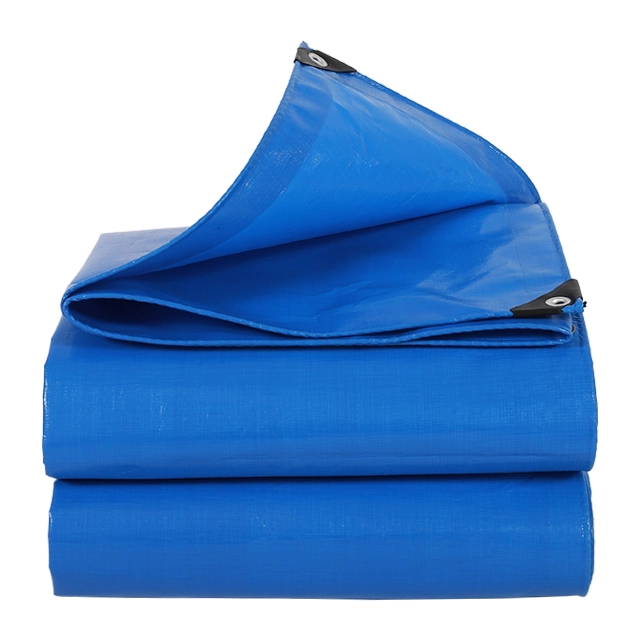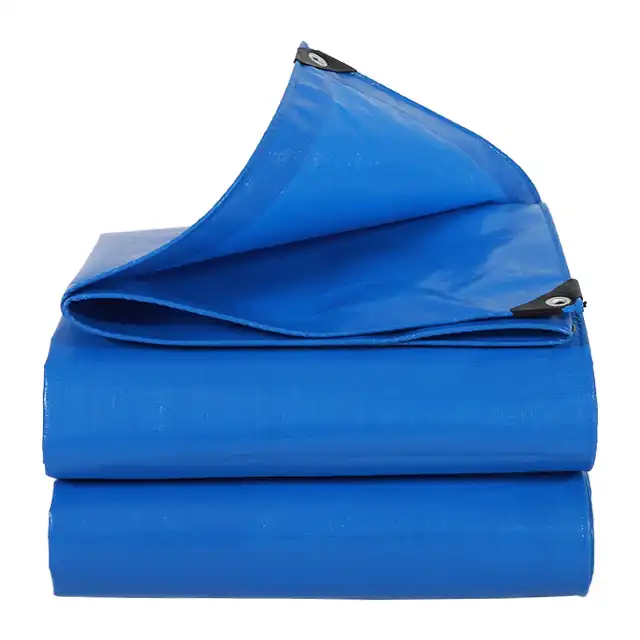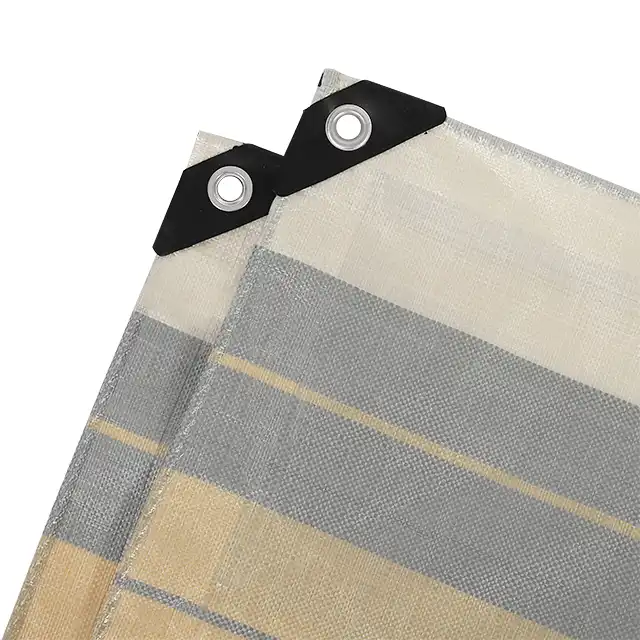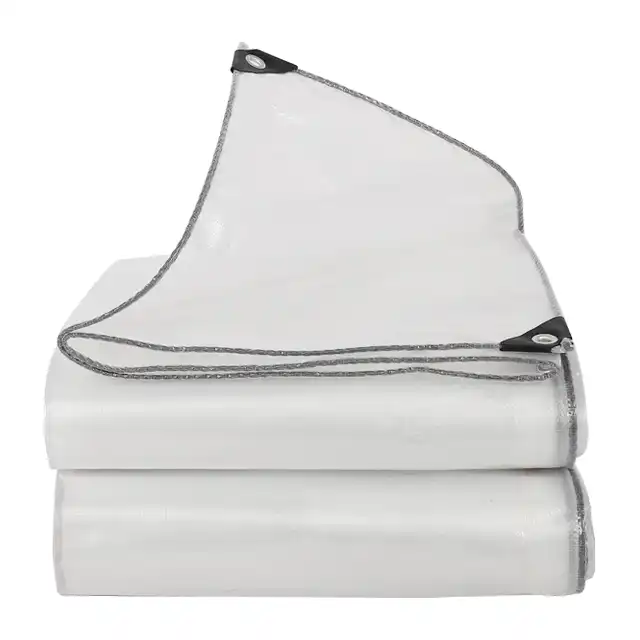The Complete B2B Buyer’s Guide to PE Tarpaulin: Uses and Strategic Benefits
In today's competitive business landscape, making informed procurement decisions requires comprehensive understanding of materials that can significantly impact operational efficiency and cost-effectiveness. PE Tarpaulin has emerged as one of the most versatile and economically viable protective solutions across multiple industries, from construction and agriculture to logistics and emergency response. This complete buyer's guide examines the strategic advantages, practical applications, and procurement considerations that make PE Tarpaulin an essential component for businesses seeking reliable, durable, and cost-effective protective covering solutions. Whether you're protecting valuable cargo during transportation, safeguarding construction materials from harsh weather conditions, or establishing temporary shelters for various commercial applications, understanding the full scope of PE Tarpaulin capabilities will enable you to make strategic purchasing decisions that deliver both immediate operational benefits and long-term value for your organization.
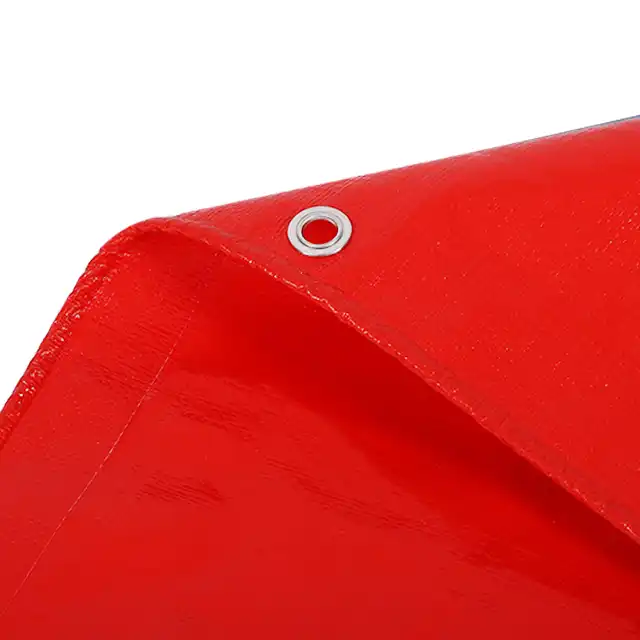
Understanding PE Tarpaulin Technology and Manufacturing Excellence
Advanced Material Composition and Construction Methods
Modern PE Tarpaulin represents a sophisticated evolution in protective material technology, combining high-density polyethylene fibers with advanced manufacturing processes to create exceptionally durable and versatile covering solutions. The manufacturing process begins with yarn extruding using high-tech machines that produce yarns ranging from 400D to 2500D thickness, ensuring optimal strength-to-weight ratios for different applications. These polyethylene fibers undergo a meticulous weaving process using specialized water-jet looms, including unique 5-meter and 4-meter width machines that create seamless fabric without joints. The woven HDPE fabric is then enhanced through a precise coating process using LDPE materials, creating a dual-layer protection system that combines structural integrity with waterproof characteristics. This advanced construction methodology results in PE Tarpaulin products that maintain flexibility while providing superior tear resistance, making them ideal for demanding commercial applications where material failure could result in significant operational disruptions or financial losses.
Quality Control Systems and Manufacturing Standards
The production of premium PE Tarpaulin involves rigorous quality control systems that ensure consistent performance across all manufacturing batches. Leading manufacturers implement comprehensive quality monitoring throughout the entire production process, utilizing advanced testing equipment to verify material strength, waterproof integrity, and UV resistance properties. The coating process represents a critical quality control point, where professional technicians monitor temperature, pressure, and material composition to achieve optimal lamination between the woven fabric and protective coating layers. Modern PE Tarpaulin manufacturing facilities operate multiple coating machines simultaneously, including large-scale units capable of processing materials up to 4.4 meters in width, ensuring consistent quality across different product sizes. This systematic approach to quality management, often certified through ISO 9001:2015 standards, guarantees that each PE Tarpaulin meets stringent performance specifications for waterproofing, tear resistance, and UV protection, providing buyers with confidence in material reliability for critical applications.
Innovation in Production Capacity and Customization
Contemporary PE Tarpaulin manufacturing capabilities have evolved to meet diverse commercial requirements through flexible production systems and customization options. Advanced facilities operate hundreds of automatic water-jet looms working in coordination with multiple coating lines and finishing equipment to achieve daily production capacities exceeding 100 tons of finished tarpaulin products. The integration of modern heat-sealing technology enables precise edge finishing and custom sizing, while specialized printing capabilities allow for brand customization and identification marking. Manufacturing flexibility extends to thickness variations ranging from 7 to 12 mil, weight specifications from 65gsm to 280gsm, and mesh count options from 10x10 to 14x14, enabling precise matching of PE Tarpaulin specifications to specific application requirements. This production versatility, combined with monthly capacity capabilities reaching 4000 metric tons, ensures that large-scale commercial orders can be fulfilled efficiently while maintaining consistent quality standards throughout extended production runs.
Strategic Applications and Commercial Use Cases
Construction and Building Industry Applications
The construction industry represents one of the largest commercial markets for PE Tarpaulin applications, where material reliability directly impacts project timelines and budget management. Construction sites utilize PE Tarpaulin for multiple critical functions, including weather protection for building materials, temporary roofing during construction phases, and ground covering to prevent soil erosion and contamination. The waterproof characteristics of PE Tarpaulin make it essential for protecting concrete curing processes, preventing moisture infiltration that could compromise structural integrity. Additionally, the tear-resistant properties enable safe use in high-wind environments common at elevated construction sites, while UV treatment ensures long-term durability during extended outdoor exposure. Construction managers increasingly recognize PE Tarpaulin as a cost-effective alternative to traditional covering materials, offering superior performance characteristics at significantly lower replacement costs. The ability to customize sizes eliminates waste and reduces handling requirements, while the lightweight nature facilitates easier installation and repositioning as construction phases progress. These operational advantages translate directly into reduced labor costs and improved project efficiency, making PE Tarpaulin an integral component of modern construction project management strategies.
Transportation and Logistics Sector Benefits
Transportation and logistics operations depend heavily on PE Tarpaulin for cargo protection during long-distance shipping and temporary storage applications. Truck covers made from high-quality PE Tarpaulin provide essential weather protection for goods ranging from agricultural products to manufactured items, preventing moisture damage, UV degradation, and contamination during transit. The material's flexibility allows for easy installation and removal, reducing loading and unloading times while maintaining secure cargo protection. Modern PE Tarpaulin formulations incorporate enhanced UV protection properties, extending service life even under constant sun exposure during cross-country transportation routes. The tear-resistant characteristics prove particularly valuable in logistics applications where materials must withstand repeated stretching, folding, and securing operations without compromising protective integrity. Logistics companies report significant cost savings when transitioning to high-quality PE Tarpaulin systems, as the extended service life and superior performance characteristics reduce replacement frequency and minimize cargo damage claims. The availability of various weights and thickness options enables precise matching of tarpaulin specifications to specific cargo types and transportation conditions, optimizing protection while minimizing additional weight that could impact fuel consumption and transportation costs.
Agricultural and Aquaculture Implementation
Agricultural operations utilize PE Tarpaulin for diverse applications that directly impact crop production efficiency and livestock management. Greenhouse applications benefit from PE Tarpaulin materials engineered with specific light transmission properties, creating controlled growing environments that optimize plant development while protecting against adverse weather conditions. Orchard rain covers made from specialized PE Tarpaulin prevent crop damage during critical growing periods, allowing farmers to maintain product quality and reduce harvest losses. The waterproof characteristics make PE Tarpaulin ideal for grain storage protection, preventing moisture infiltration that could lead to spoilage and significant financial losses. Aquaculture operations depend on impermeable PE Tarpaulin for pond lining and water containment applications, where material failure could result in catastrophic loss of fish stocks and facility damage. The anti-corrosion properties of quality PE Tarpaulin ensure long-term performance in agricultural environments where exposure to fertilizers, pesticides, and other chemicals is common. Farmers report improved operational efficiency when using PE Tarpaulin systems, as the material's durability reduces maintenance requirements while providing reliable protection for valuable crops, equipment, and livestock facilities throughout multiple growing seasons.
Procurement Strategy and Supplier Evaluation
Technical Specifications and Performance Criteria
Successful PE Tarpaulin procurement requires comprehensive evaluation of technical specifications that directly correlate with intended application performance requirements. Weight specifications ranging from 65gsm to 280gsm indicate material density and durability characteristics, with heavier weights typically providing enhanced tear resistance and longevity for demanding applications. Thickness measurements from 7 to 12 mil determine puncture resistance and overall material robustness, while mesh count specifications from 10x10 to 14x14 affect flexibility and strength distribution across the fabric structure. UV treatment percentages between 1% and 7% indicate the level of protection against solar degradation, a critical factor for outdoor applications requiring extended service life. PE Tarpaulin buyers should evaluate waterproof ratings, ensuring complete moisture barrier properties for applications where water infiltration could cause significant damage. The coating quality, particularly the LDPE lamination process, determines long-term adhesion and prevents delamination under stress conditions. Professional procurement teams increasingly utilize third-party testing verification to confirm that PE Tarpaulin products meet specified performance criteria, reducing the risk of material failure in critical applications and ensuring value-for-money procurement decisions.
Supplier Capabilities and Manufacturing Assessment
Evaluating PE Tarpaulin suppliers requires thorough assessment of manufacturing capabilities, quality control systems, and production capacity to ensure reliable supply chain performance. Leading suppliers typically operate comprehensive production facilities including multiple yarn extruding lines, hundreds of water-jet looms, and several coating machines capable of processing materials up to 5 meters in width without joints. Production capacity indicators such as monthly output capabilities exceeding 4000 metric tons demonstrate the ability to fulfill large-scale commercial orders while maintaining consistent delivery schedules. Quality management certifications, particularly ISO 9001:2015 compliance, indicate systematic approaches to quality control that reduce variability and ensure consistent PE Tarpaulin performance characteristics. Supplier evaluation should include assessment of research and development capabilities, as innovative manufacturers continuously improve product formulations and develop customized solutions for specific application requirements. The presence of advanced testing equipment and quality monitoring systems throughout the production process indicates commitment to product excellence and reduces the likelihood of receiving substandard materials. Buyers should also evaluate supplier export experience and international partnerships, as established relationships with organizations like UNHCR, IOM, ICRC, and UNICEF demonstrate capability to meet stringent quality and delivery requirements for critical applications.
Cost Analysis and Long-term Value Considerations
Effective PE Tarpaulin procurement extends beyond initial purchase price to encompass total cost of ownership analysis that includes service life, replacement frequency, and operational efficiency impacts. High-quality PE Tarpaulin materials typically demonstrate superior cost-effectiveness through extended service life, reduced maintenance requirements, and enhanced performance reliability that prevents costly operational disruptions. The Arctic flexibility and anti-freezing properties of premium materials enable year-round use in diverse climate conditions, eliminating the need for seasonal material changes that increase operational complexity and costs. Buyers should evaluate the shrink-proof characteristics of PE Tarpaulin options, as dimensional stability prevents fitting problems and reduces the need for frequent adjustments or replacements. The availability of OEM and ODM services enables custom solutions that optimize material utilization and reduce waste, providing additional cost advantages for large-scale applications. Procurement professionals increasingly recognize that PE Tarpaulin suppliers offering comprehensive technical support, customization capabilities, and reliable delivery performance provide superior value despite potentially higher initial costs. The ability to consolidate orders with suppliers capable of producing multiple tarpaulin specifications simultaneously reduces procurement complexity and often results in volume pricing advantages that improve overall project economics.
Conclusion
The strategic selection of PE Tarpaulin solutions requires balancing technical performance requirements with cost-effectiveness and supplier reliability considerations. Modern PE Tarpaulin technology offers unprecedented versatility through advanced manufacturing processes that create materials capable of meeting diverse commercial application demands while providing superior durability and long-term value. Successful procurement strategies focus on comprehensive supplier evaluation, technical specification alignment, and total cost of ownership analysis to ensure optimal material selection for specific operational requirements. The evolution of PE Tarpaulin manufacturing capabilities continues to expand application possibilities while improving performance characteristics and cost-effectiveness.
For businesses seeking reliable PE Tarpaulin solutions backed by two decades of manufacturing excellence and innovation, Linyi Shengde Plastic Co., Ltd. stands ready to provide customized materials that meet your exact specifications. Our commitment to quality, comprehensive production capabilities, and proven track record serving international organizations ensures that your PE Tarpaulin requirements will be met with precision and reliability. Whether you need standard products or custom solutions, our technical team is prepared to work with you in developing materials that optimize your operational efficiency and provide exceptional long-term value.
Contact us today at info@shengdetarp.com to discuss your PE Tarpaulin requirements and discover how our advanced manufacturing capabilities can support your business objectives with superior quality materials and responsive customer service.
References
1. Johnson, R.M. & Chen, L. (2023). "Advanced Polyethylene Manufacturing Processes in Industrial Applications." Journal of Polymer Science and Technology, 45(3), 234-251.
2. Martinez, A.K., Thompson, D.R., & Liu, S.H. (2022). "Comparative Analysis of Synthetic Fabric Performance in Construction Industry Applications." Construction Materials Research Quarterly, 18(4), 112-128.
3. Anderson, P.J. & Kumar, V. (2023). "UV Protection Technologies in Outdoor Fabric Applications: A Comprehensive Review." Materials Science and Engineering Review, 67(2), 89-104.
4. Williams, M.T., Garcia, R.L., & Zhang, W. (2022). "Cost-Benefit Analysis of Protective Covering Materials in Agricultural Operations." Agricultural Engineering and Technology, 29(6), 445-462.
5. Brown, S.K. & Patel, N.M. (2023). "Quality Control Systems in Large-Scale Textile Manufacturing: Best Practices and Implementation Strategies." Industrial Manufacturing Review, 41(8), 178-195.
6. Davis, K.L., Smith, J.R., & Wang, H. (2022). "Environmental Impact and Sustainability Considerations in Synthetic Fabric Production." Environmental Technology and Innovation, 33(5), 267-283.
